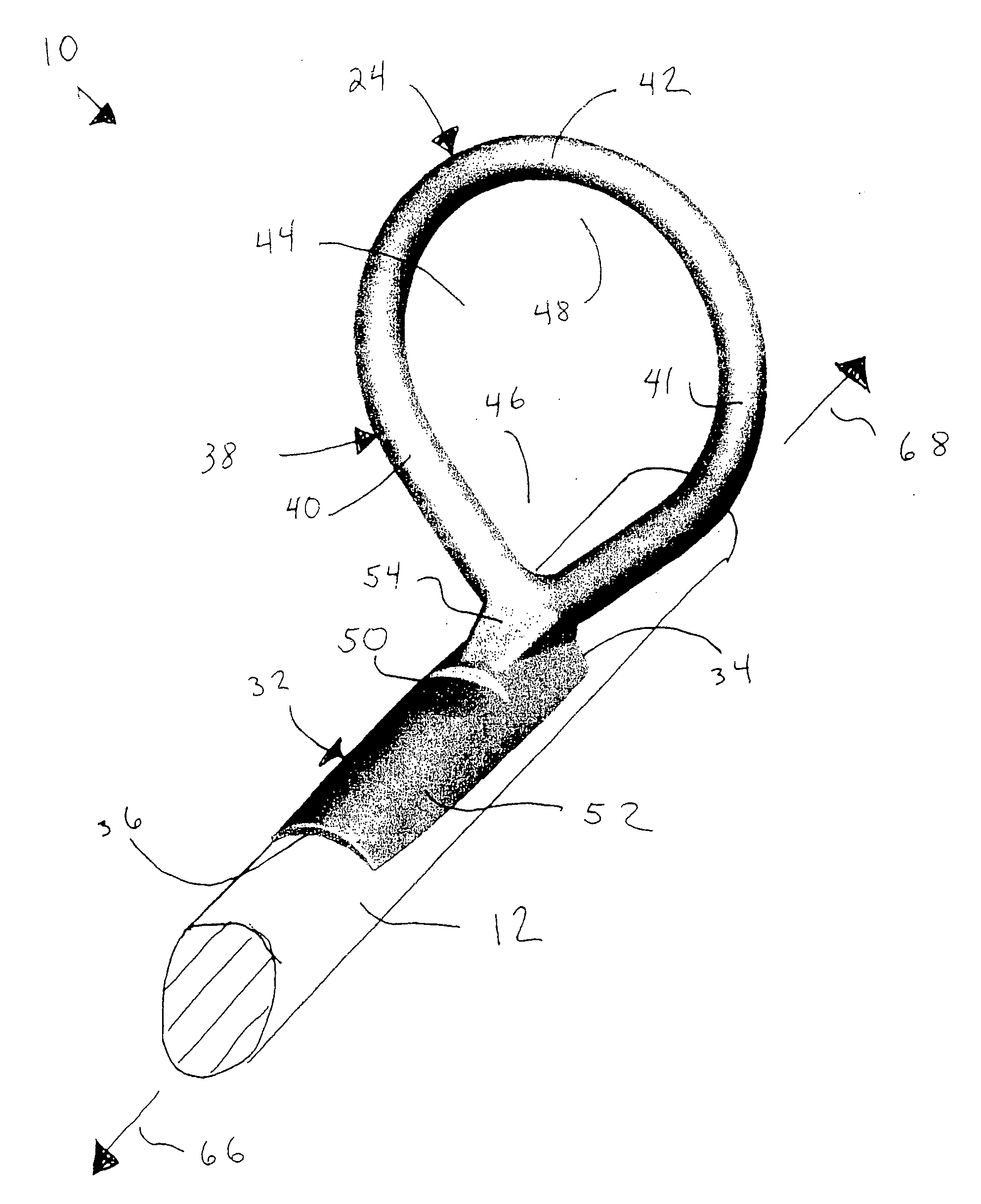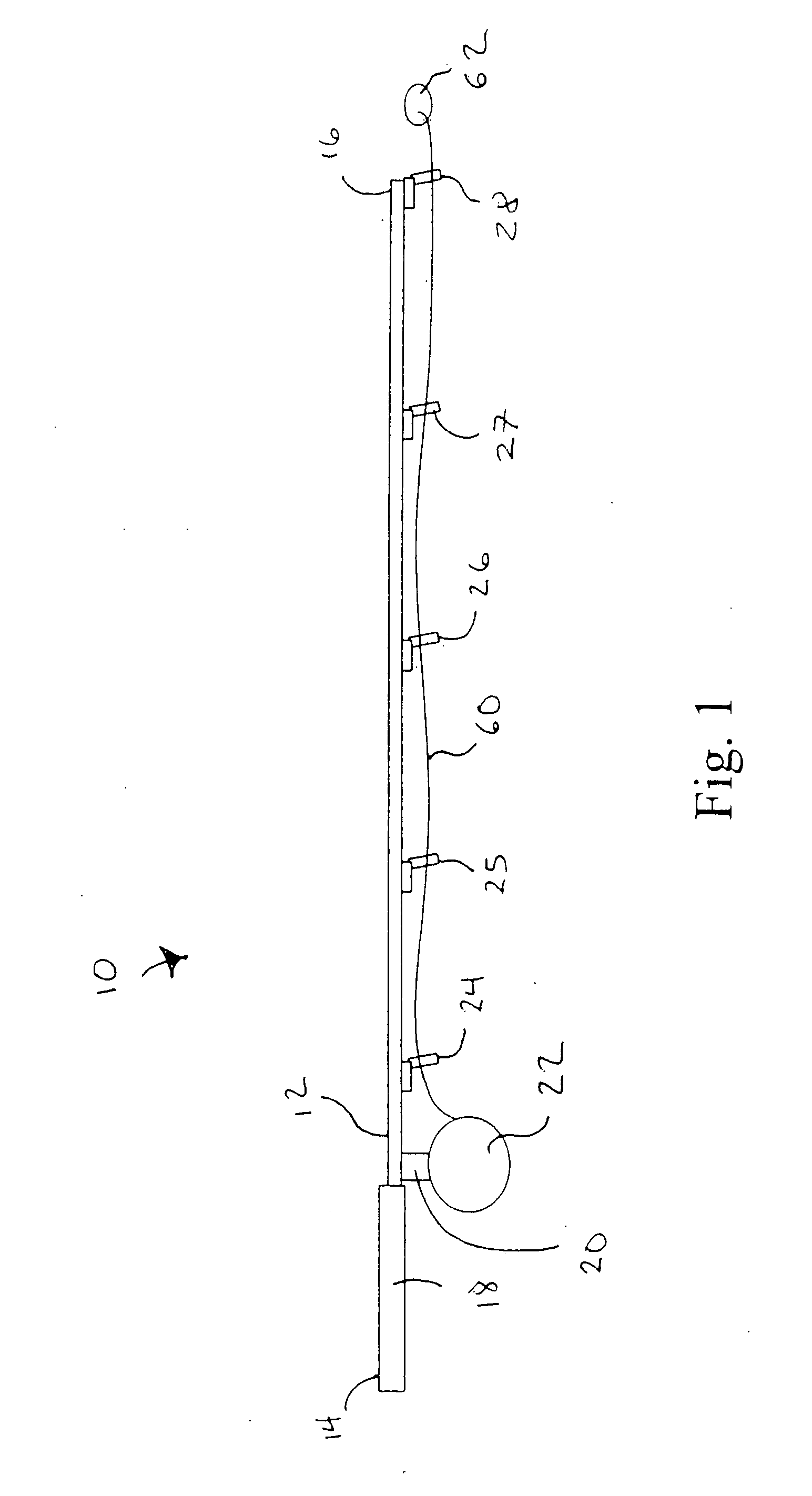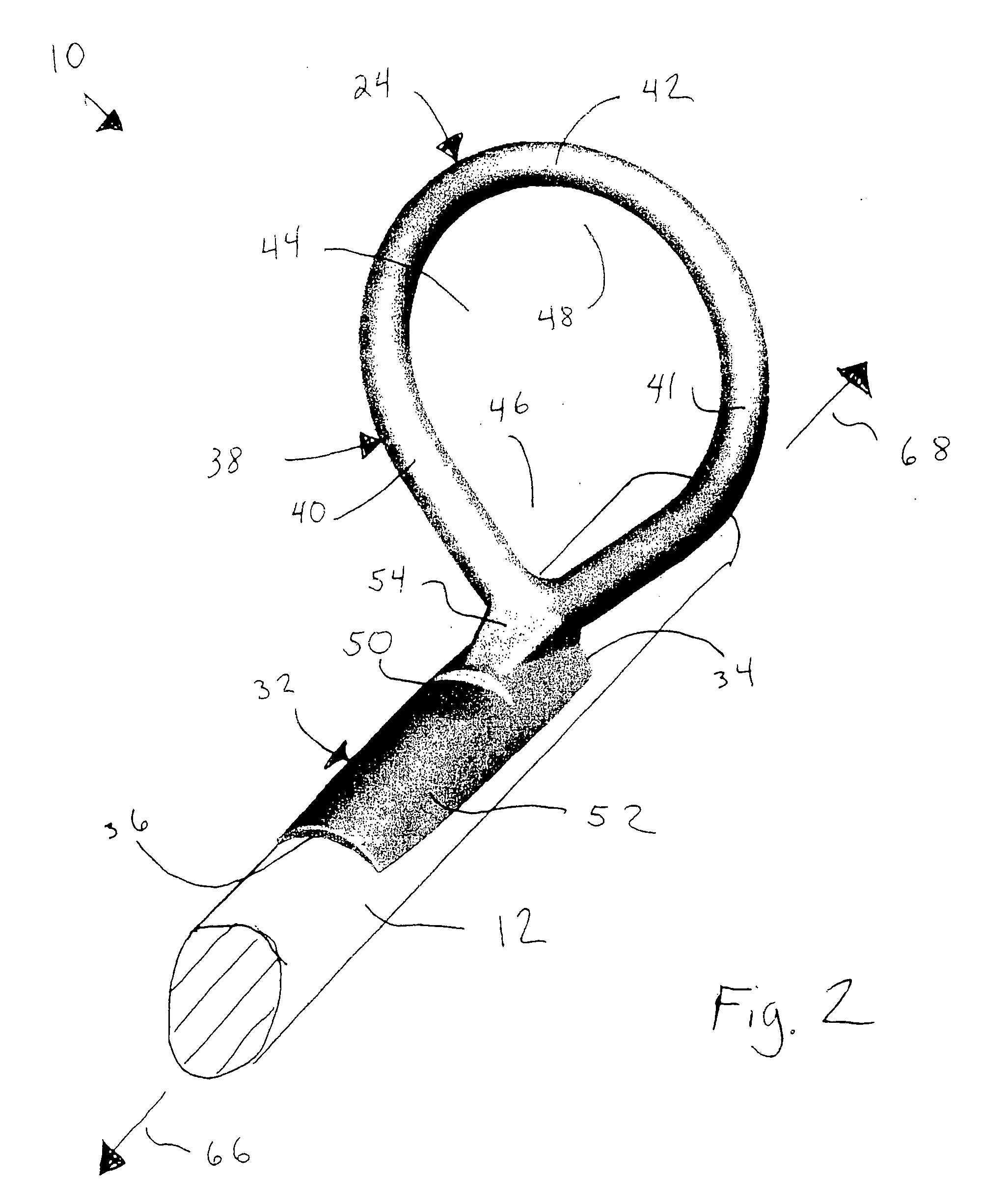Line guides for fishing rods
- Summary
- Abstract
- Description
- Claims
- Application Information
AI Technical Summary
Benefits of technology
Problems solved by technology
Method used
Image
Examples
Embodiment Construction
[0042]The embodiments of the present invention described below are not intended to be exhaustive or to limit the invention to the precise forms disclosed in the following detailed description. Rather the embodiments are chosen and described so that others skilled in the art may appreciate and understand the principles and practices of the present invention.
[0043]The line guides of the present invention may be used on a wide variety of fishing rod types such as those used for cast fishing, surf fishing, boat fishing, mountain stream fishing and the like, including spinning rods and bait casting rods. For purposes of illustration, FIG. 1 shows a representative spinning rod 10 incorporating one or more line guides 24, 25, 26, 27, and 28 that incorporate principles of the present invention. As shown, rod 10 includes a body 12 extending from butt end 14 to tip 16. Grip 18 is provided at butt end 14, and reel seat 20 is positioned in front of grip 18. Spinning reel 22 is mounted to reel s...
PUM
 Login to View More
Login to View More Abstract
Description
Claims
Application Information
 Login to View More
Login to View More - R&D
- Intellectual Property
- Life Sciences
- Materials
- Tech Scout
- Unparalleled Data Quality
- Higher Quality Content
- 60% Fewer Hallucinations
Browse by: Latest US Patents, China's latest patents, Technical Efficacy Thesaurus, Application Domain, Technology Topic, Popular Technical Reports.
© 2025 PatSnap. All rights reserved.Legal|Privacy policy|Modern Slavery Act Transparency Statement|Sitemap|About US| Contact US: help@patsnap.com



